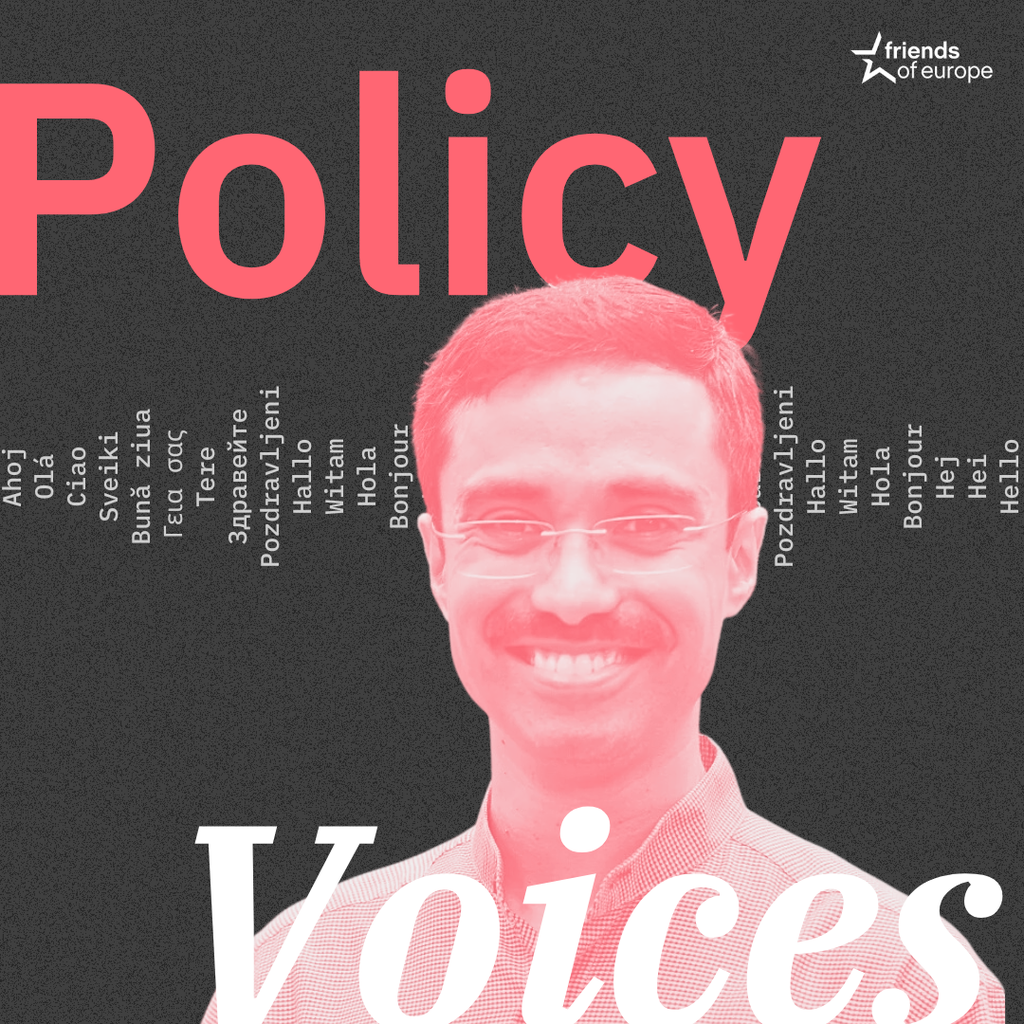A European agenda for space: resilience, security and sovereignty
Past event In person

- Area of Expertise
- Digital & Data Governance

Head of Social Policy at the OECD
By 2060, close to one in three EU citizens will be over 65, it may seem tomorrow’s problem but it’s posing problems for today’s governments. It is easy enough to project what this may mean for the size of the workforce and the financing of social protection systems, but the wider implications of this demographic shift are harder to grasp.
Many European governments are starting to take the demographic transition seriously, but far too often they focus on the so-called “silver economy”. This is the consumption and spending habits of older citizens and the economic opportunities of catering to their growing needs. Yet the demographic transition is not only about people living longer lives; it is about radically different working and living conditions for younger generations. And this is something that few governments have been paying enough attention to.
European governments’ primary worry has been to prevent an explosion of age-related spending. Spending on pensions according to EU projections, is expected to rise by 1.5% of GDP, going from 11.5% now to 13% by 2060. So it’s no surprise that pension reform has been a top priority for policymakers. Retirement ages have been increased to an average of 67, the benefits scaled down and most avenues to early retirement closed. There are more incentives for working longer, and there have been automatic adjustments of pension rules to reflect demographic changes. Policies that encourage people to make their own private retirement provisions are also gaining ground.
For reforms to make pension systems financially sustainable, workers’ and employers’ behaviour also needs to change. We can already observe a rapid rise in the employment rate of older workers, with higher retirement ages in many European countries
These are welcome changes, but they are not enough. For reforms to make pension systems financially sustainable, workers’ and employers’ behaviour also needs to change. We can already observe a rapid rise in the employment rate of older workers, with higher retirement ages in many European countries. Nevertheless, efforts to make older workers more employable by removing hiring barriers and preventing discrimination need to be stepped up. And this is where business has a crucial role to play; offering fitness programmes for older workers and healthier canteen food can only go so far.
Managing the necessary transitions of the European workforce will demand substantial adjustments in the workplace, along with more and better training to keep workers’ skills up to date as they themselves age and technology advances. More flexible working arrangements can help to encourage people to stay on the job at their own pace, and organising the passing on of technical expertise and experience from older to younger co-workers will help smooth the effects of ageing on the workforce. The investments needed to prepare companies for the demographic transition will not come cheaply; companies will need to budget for spending more, and that’s something both CEOs and shareholders need to understand.
Working for longer is not always an option as some workers will still retire early because of strain or declining health. Life expectancy and health indicators show that our societies are ageing unequally. Income, health, gender and other inequalities people experience during their active years often end up in a compounded disadvantage in old age which can result in poverty and inadequate access to long-term care. Trying to compensate for these inequalities in old age through pensions and other social benefits won’t work, as the task is too big. Inequality must be addressed when it occurs rather than when it is too late and this must be part of our more comprehensive demographic strategies.
Life expectancy and health indicators show that our societies are ageing unequally. Income, health, gender and other inequalities people experience during their active years often end up in a compounded disadvantage in old age
To cope with an ageing and shrinking labour force, we need people to work more, not less. At the OECD our projections show that increasing the number of women in work and enabling them to work longer hours could give a significant boost to growth, especially in countries where ageing means the labour force is already shrinking. Well-designed family policies have a central role to play; accommodating the needs of parents with young children pays off because women can return to work more easily.
The message is that governments need to understand that family policies are not a luxury, despite all the pressures of fiscal consolidation. The Nordic countries and France have been putting resources into support for families with the result that both high fertility and female employment rates improve their ability to confront challenges of ageing populations.
A more difficult obstacle is the persistence in some countries of cultural barriers to working mothers. A recent study found that many German women would rather not have any children at all than to expose themselves to the criticism of being a mother who neglects her children. This suggests that providing childcare infrastructure can only solve part of the problem; mindsets will need to change, and this is a slower process that policymakers have less power to influence.
To cope with an ageing and shrinking labour force, we need people to work more, not less
We also need to pay much more attention to the plight of younger Europeans. Over the past 25 years, youth have replaced the elderly to become the group at the highest risk of poverty. The risk is that unemployment, poverty and social exclusion in youth may shape people’s lives and compromise their well-being for years to come.
Most national strategies to address ageing include the need for an inter-generational approach, but the needs of younger people are not addressed in nearly as much detail as those of the elderly. Today’s concern over the high levels of youth unemployment have yielded initiatives to help Europe’s young, like the EU’s European Youth Guarantee, but mastering the demographic transition goes far beyond finding jobs for young people. A strategic approach includes asking what type of world we want for our children and grand-children, what needs they have now and in the future, what means most to them for their well-being and what kinds of policy changes may be beneficial to all generations.
Australia offers a good example for a comprehensive approach to ageing, since 2002, Australian’s Treasury has every five years published an inter-generational report. This initially focussed on budget projections, but has since become much broader and now includes issues like climate change, education and the overall well-being of Australians. These inter-generational reports have resulted in projection tools for policymakers which give them guidance for difficult decisions and trade-offs. Interestingly, Australia is among the OECD countries with the lowest projected increase of age-related spending.
Designing a future for all generations is obviously far more difficult than devising policies for each group separately, especially when public institutions are set up to deal independently with each group. But this should be no excuse for a business-as-usual approach. European countries must wake up more quickly to the demographic challenge because the window of opportunity for effective policymaking is now closing.
Past event In person

Next event In person & livestreamed

Past event Online

Past event In person





Stay informed
We use cookies and similar technologies to adjust your preferences, analyze traffic and measure the effectiveness of our campaigns. Learn more about our privacy policy.